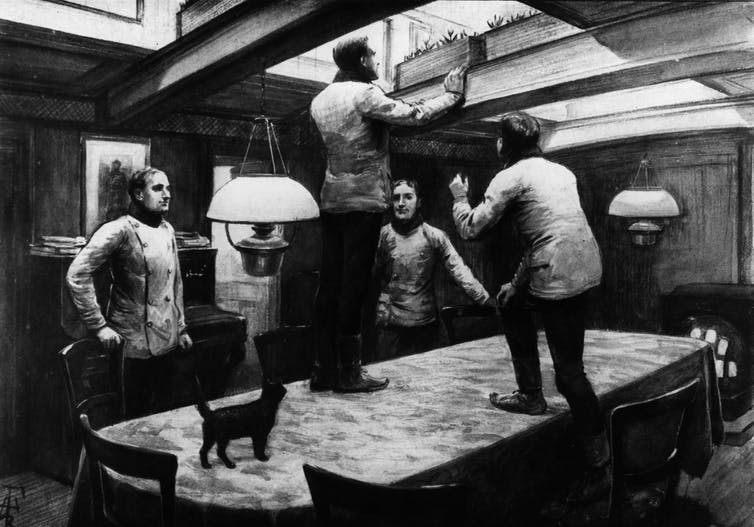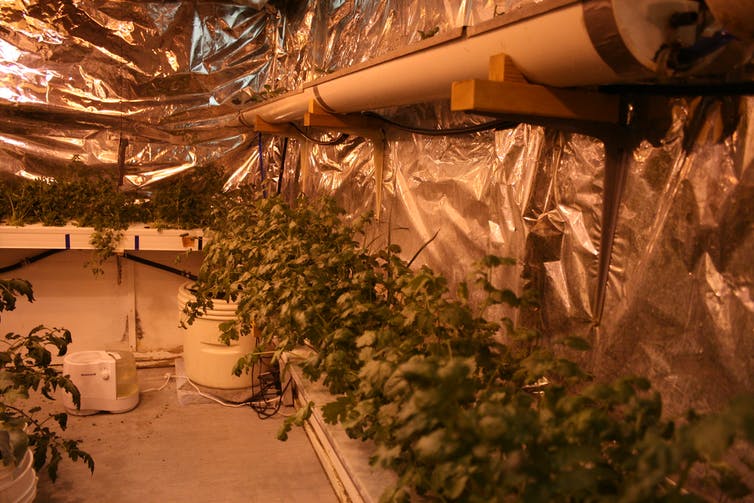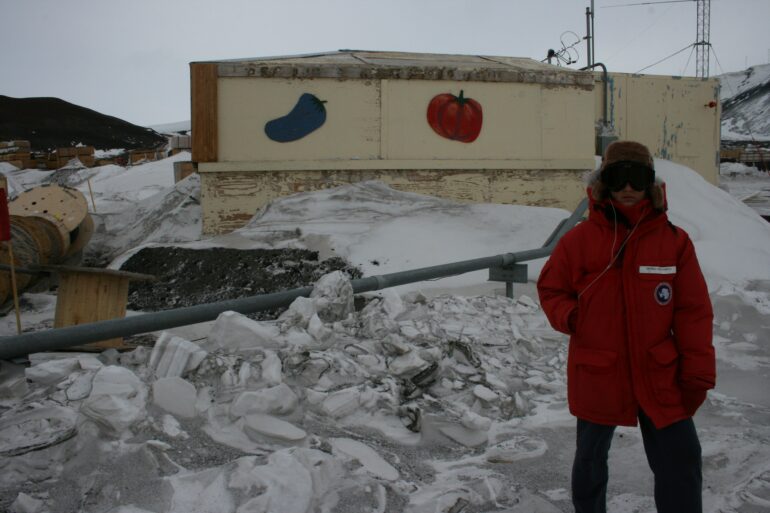Figuring out how to feed people in space is a major part of a larger effort to demonstrate the viability of long-term human habitation of extraterrestrial environments. On May 12, 2022, a team of scientists announced that they had successfully grown plants using lunar soil gathered during the Apollo moon missions. But this is not the first time that scientists have attempted to grow plants in soils that typically do not support life.
I am a historian of Antarctic science. How to grow plants and food in the far southern reaches of Earth has been an active area of research for more than 120 years. These efforts have helped further understanding of the many challenges of agriculture in extreme environments and eventually led to limited, but successful, plant cultivation in Antarctica. And especially after the 1960s, scientists began to explicitly look at this research as a steppingstone to human habitation in space.

This painting shows a room aboard the Antarctic research ship Discovery, where the first plants were grown using soil from Antarctica.
Hulton Archive/Stringer via Getty Images
Growing plants in Antarctica
The earliest efforts to grow plants in Antarctica were primarily focused on providing nutrition to explorers.
In 1902, British physician and botanist Reginald Koettlitz was the first person to grow food in Antarctic soils. He collected some soil from McMurdo Sound and used it to grow mustard and cress in boxes under a skylight aboard the expedition’s ship. The crop was immediately beneficial to the expedition. Koettlitz produced enough that during an outbreak of scurvy, the entire crew ate the greens to help stave off their symptoms. This early experiment demonstrated that Antarctic soil could be productive, and also pointed to the nutritional advantages of fresh food during polar expeditions.
Early attempts to grow plants directly in Antarctic landscapes were less successful. In 1904, Scottish botanist Robert Rudmose-Brown mailed seeds from 22 cold-tolerant Arctic plants to the small, frigid Laurie Island to see if they would grow. All of the seeds failed to sprout, which Rudmose-Brown attributed to both the environmental conditions and the absence of a biologist to help usher their growth.
There have been many more attempts to introduce nonnative plants to the Antarctic landscape, but generally they didn’t survive for long. While the soil itself could support some plant life, the harsh environment was not friendly to plant cultivation.

The only way to successfully grow food in the cold environment of Antarctica is inside a greenhouse, like this one at McMurdo Station.
Eli Duke/Flickr, CC BY-SA
Modern techniques and emotional benefits
By the 1940s, many nations had begun setting up long-term research stations in Antarctica. Since it was impossible to grow plants outside, some people living at these stations took it upon themselves to…
